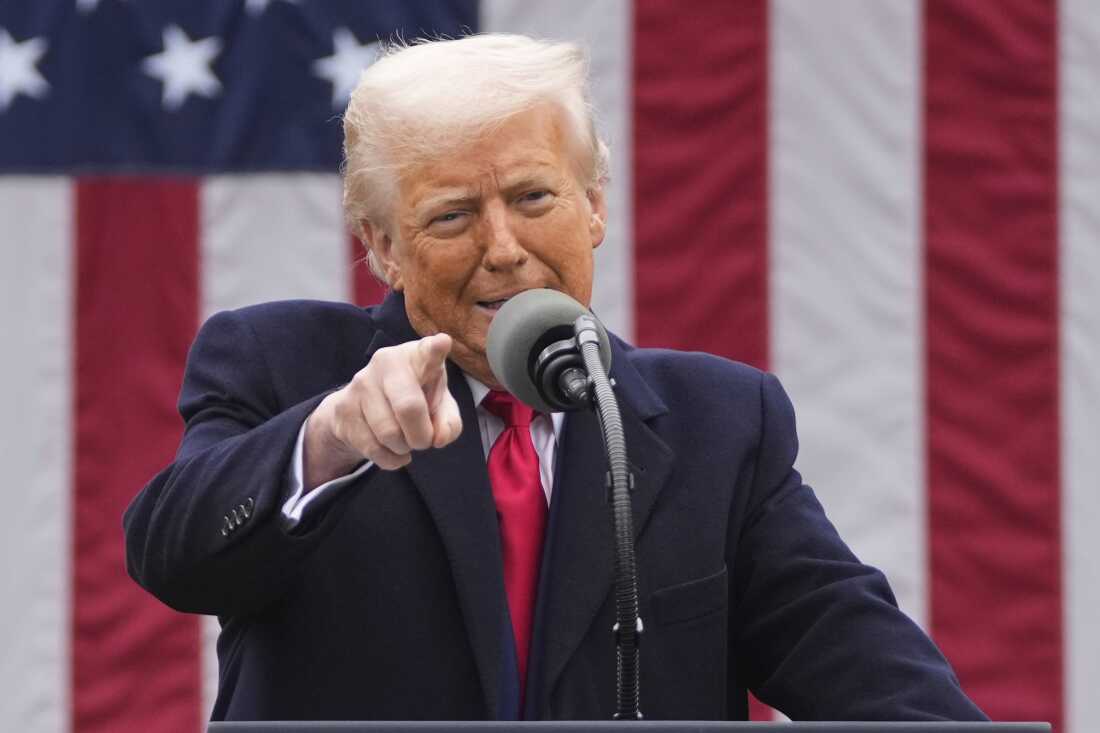Former President Donald Trump has proposed a new economic measure aimed at easing the financial burden on American households. The plan, which involves issuing $2,000 rebate checks tied to tariffs, has sparked debate among economists, policymakers, and the public, raising questions about its potential impact on inflation, trade, and the broader economy.
Trump’s suggestion arises amidst continuous conversations regarding the handling of economic repercussions stemming from global trade strategies. Tariffs, defined as levies applied to imported products, have historically served as a mechanism for the United States to safeguard local businesses, shape international relations, and accrue funds. Nevertheless, they can also result in elevated consumer prices and complexities within worldwide trade connections. Through the provision of refund checks matching specific tariff earnings, the concept aims to counteract the heightened expenses encountered by American families, effectively channeling funds gathered from import duties straight back to the populace.
Understanding the mechanics of the rebate
The notion of a $2,000 reimbursement is intended to serve as a direct financial offset for consumers facing elevated costs due to duties on imported goods. Fundamentally, should tariffs lead to an increase in product prices, the government would issue payments to qualified citizens to mitigate a portion of that economic burden. Supporters contend that this strategy could offer prompt assistance to households grappling with escalating expenses, especially for necessities such as groceries, apparel, and gadgets.
However, detractors warn that the proposal might lead to unforeseen outcomes. Although it could briefly boost discretionary spending, certain financial experts caution that it might worsen inflationary trends. By infusing capital into the market without a commensurate rise in available goods, prices could escalate even more, possibly eroding the intended advantage of the refund. Furthermore, questions arise regarding the funding mechanism for such an initiative, its practical execution, and the potential for political division stemming from its introduction.
Economic and political implications
The proposition also holds considerable political significance. By connecting the refunds to duties—a characteristic feature of Trump’s past commercial regulations—the initiative resonates with a demographic that favors assertive protectionist approaches. It portrays the former head of state as a defender of the “average American,” directly tackling worries about living expenses and financial disparity. Concurrently, it reignites discussions regarding the actual efficacy of tariffs. Detractors contend that tariffs frequently harm domestic enterprises dependent on imported goods, potentially jeopardizing the enduring vitality of the economy.
From a broad economic standpoint, these rebates have the potential to shape how consumers act. With an injection of $2,000 per payment, households might boost their expenditures, thereby bolstering economic expansion in the near term. Businesses in retail and services could experience heightened demand, and specific industries might enjoy a temporary surge. However, economists are split on whether this initiative would result in lasting enhancements to the economic climate or simply offer a brief stimulus with restricted enduring impact.
Potential effects on trade relations
Another layer of complexity lies in the impact on international trade relations. Tariffs are a contentious tool, often sparking retaliatory measures from trading partners. While rebate checks might soften the domestic perception of tariffs, they do not eliminate the underlying trade barriers. Countries affected by U.S. tariffs may continue to impose their own tariffs or seek other measures to protect their industries, potentially leading to trade tensions.
Moreover, enterprises operating within international supply networks might encounter difficulties if tariffs and their associated reimbursements are not meticulously applied. Businesses dependent on imported resources could experience unpredictable cost variations, potentially disrupting manufacturing timelines and impacting job stability. Policymakers would be tasked with weighing the national advantages of rebates against the wider repercussions for both global trade and local industries.
Public reception and viability
Public reaction to the rebate proposal has been mixed. Some Americans welcome the idea as a direct means to alleviate financial stress, particularly in a climate of rising living costs. Others view it skeptically, questioning the practicality of administering such payments and the long-term implications for the economy. Social media and news outlets have amplified both support and criticism, reflecting broader divisions in public opinion about trade policy, government spending, and economic intervention.
Implementation feasibility is another critical factor. Issuing $2,000 payments to millions of Americans would require robust administrative infrastructure, including accurate identification of eligible recipients, coordination with banking systems, and mechanisms to prevent fraud. Past experiences with stimulus checks and rebate programs highlight the challenges inherent in executing large-scale payments efficiently. Any delays or errors could undermine public confidence and reduce the program’s effectiveness.
While the proposal is still largely conceptual, it has reignited discussions about how best to support households facing economic pressures. The rebate checks illustrate a broader debate about the intersection of trade policy and domestic welfare: how to protect American industries without placing undue burden on consumers. Policymakers, economists, and the public will likely continue to scrutinize the plan’s feasibility, potential economic impact, and political ramifications in the months ahead.
Ultimately, the $2,000 tariff rebate proposal underscores the ongoing tension in economic policymaking: balancing short-term relief for citizens with long-term stability for the national and global economy. As debates unfold, it remains to be seen whether the initiative will gain traction, undergo modifications, or fade into the broader landscape of proposals aimed at addressing the cost of living.
Irrespective of the final result, Trump’s proposed rebate has already ignited crucial discussions concerning the interplay between trade and economic strategies and daily existence, underscoring the difficulties in formulating policies that are both fair and financially robust.

